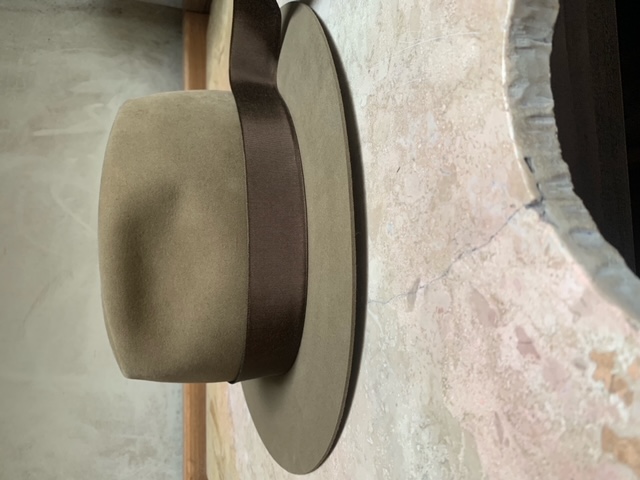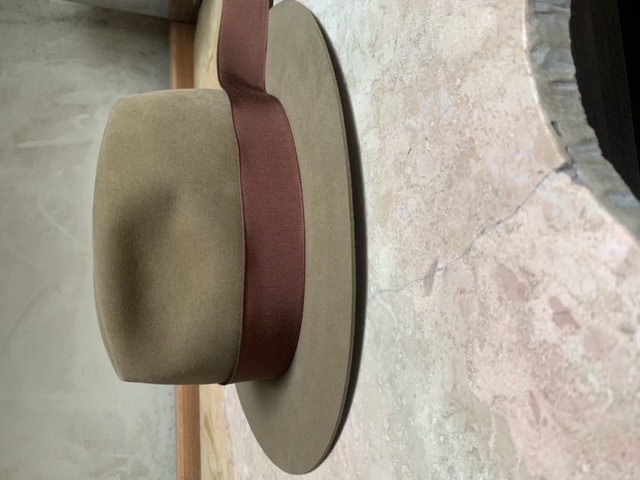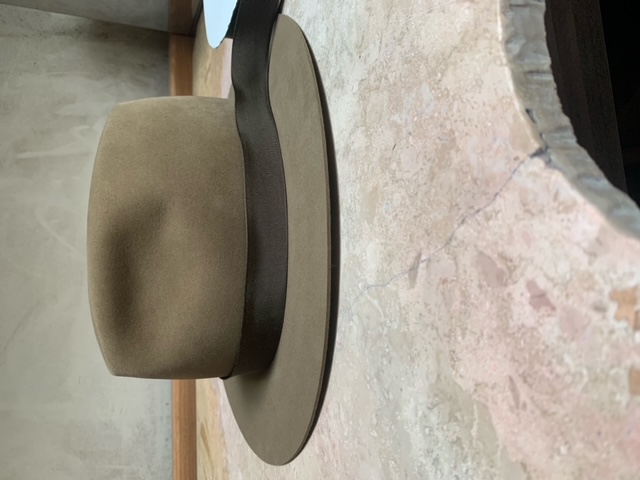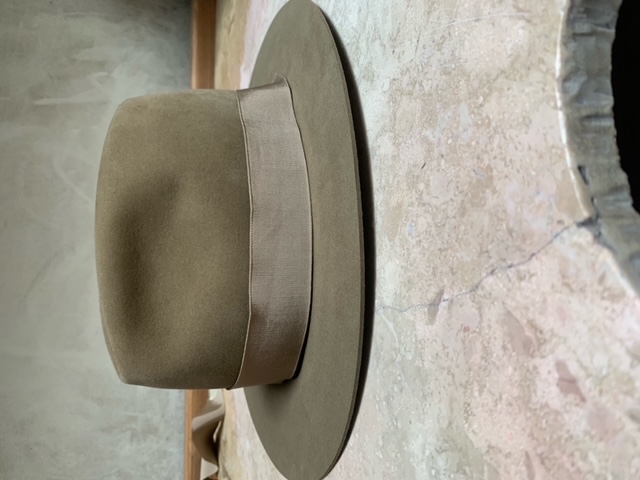Wellema Bespoke Hat: Review
- Linus Chu

- Jun 6, 2022
- 5 min read

One of the phrases you tend to hear the most when you've been in the sartorial community for long enough is that getting bespoke is just like getting therapy.
Sure, there is somehow an overlap where both the artisans and the therapists are there to listen to your problems. What is less commonly talked about, however, is the similar sense of relief that one gets from finally attaining what he or she has been long searching for, after overcoming many trials and errors.
Today's protagonist, my bespoke beaver felt fedora from Wellema Hats, deservingly takes the top prize in this regard. But before delving further into this subject matter, let us backtrack a little and meet the creator behind the exquisite piece — Cody Wellema.

I first had the pleasure of meeting Cody (and his lovely family) during Pitti Uomo 95, followed by another encounter when he was having a pop-up in London.
Now, Wellema may not be a renowned household name outside the sartorial and western hats community. Partially, that is because he only started making hats back in 2012/3. As a matter of fact, Cody's hatmaking journey started off by researching vintage garments of the 30s and 40s, and how the Great Depression and the war impacted people's lifestyles.
He is also completely self-taught, often involving taking apart vintage hats and unearthing the construction techniques which are not commonly found in today's hatmaking scene, making his crafts ever more impressive.
More holistically, though, macro-level factors, namely the lack of public awareness that independent hatmakers actually exist — going beyond the level of Lock or Borsalino — are also at play in limiting the level of recognition Cody deserves.
Regardless, in both instances, the LA-based craftsman gave off a rather modest and approachable demeanor; and, of course, his sincere passion for the craft is indisputable.
Moving on, I should point out that the whole process took place remotely given last year's travel restrictions. I can see why this can seem counterintuitive to some, considering how important it is for one to try on a hat in person.
Granted, it may be easier to deduce how a hat would look on you judging by the brim width and crown height, especially if you have a few hats lying around at home for comparison; though it is considerably more difficult to tell the suitability of the crown shape without trying the hat on.
Fortunately, the measurements Cody previously took of me during his London residency a couple of years back were deemed to be very useful. It is also worth noting that Cody took three measurements in total back then, accounting for the various ways the individual would wear the hat. This is proven to be extremely helpful given my hairstyle change.
I have also included illustrations straight from Apparel Arts (see above), alongside pictures of myself in the other fedoras and Panama hats I own, allowing Cody to get a clearer sense of what I am looking for.
Nonetheless, we did still spend some time discussing the severeness of the pinch and the crown shape, as those tend to decisively determine whether the particular felt hat is the right fit for the individual.
Regarding the former, ideally, you would want the width of the pinch to be complementary to the width of your jaw, thus forming a harmonious oval shape. I have had instances where a hat was too narrow and elongated at the end, causing a rather unflattering almond shape. What's worth noting is that beaver tends to be a tad more malleable than, say, a straw hat; allowing the user to adjust the width of the crown over time. In the end, however, we still settled for a broader pinch.
The latter is where it got more interesting. Having owned hats in both center-creased and teardrop shapes, I had a difficult time deciding which crown shape to go for, especially considering both would suit my face shape and build. It also didn't help that the two share a similar appearance from the front, making the choice less about functionality than aesthetics.
Ultimately, what ended up as the dealbreaker was how the hat would sit on the head. Given my strong preference for the fedora to sit lower on my brows, if not covering them completely, we settled with the teardrop, as it tends to sink lower on the head.
After all the details were settled (minus the trimming, as it really depends on seeing the shine and undertone of the final product in my opinion), it was then a three months long production cycle.
Speaking of trimmings, Cody presented me with four options by early December last year.
My top preferences were the bottom two, that being a dark olive on the left, which complements the neutral to cool undertone of the felt in the picture, as well as the vintage tan on the right, which is from Cody's pre-1960s archive. Both were equally tempting, with the left even giving off an Indiana Jones impression.
In the end, I went with the vintage tan, as the width of the ribbon is more akin to the ones I have previously owned, which are in general wider to masquerade the actual height of the crown. I could see why some would prefer the narrower width of the dark olive, especially if they are more used to wearing taller crowns or western hats.

So how is the final product?
At the start of the write-up, I mentioned how receiving this hat is as if I was meeting the right therapist at long last. This high praise is no exaggeration.
The height and shape of the crown are just right in matching my face. The brim width, that being approximately 6.5cm, is also ideal for complementing my more recent jackets and overcoats with wider shoulders.
The fit is also perfect. It sits exactly at the brows just as I intended the hat to be. Living in a windy area, I often struggled to find the right fedora that isn't either too tight, which can cause a headache after a few hours of wear, or one that is too loose and gone with the wind.
Notably, the beaver also remains in fairly good condition after many wears in the rain. This is perhaps to my surprise, as it has so far performed better than the mink/ beaver felt fedora I got from Lock, which has gradually shrunk over the years despite having it stretched out before.
I would imagine the quality of the leather sweatband also helps the hat in staying still on the head against the elements.
Elsewhere, the additional bound edges, meaning the hand-sewn trimmings along the brim, also add to the level of handwork.
They are practically invisible from the outside, and even if you look very closely from the outside, they give off an impression that they are machine-made given the evenness of the spacing between the needle holes.
Cody does charge an additional $75 for the handwork, but given the additional amount of time required for the making, as well as the sturdiness of the ribbon easily justifies that extra mile in my opinion.

Finally, a quick word about the beaver itself.
Cody offers two weights for his felt hats, that being a 4.5oz dress weight and a 7.5 western weight. Living in London, and being someone who easily overheats, I would say the dress weight would be sufficient for most days.
These are some reasons why I haven't compared my Wellema to my Optimo until this point — first, with one being RTW and the other bespoke; and second, they are of completely different weights. The Optimo hat is made out of more of a heavy winter weight, which is more suitable for sub 10°c weather conditions.
Interestingly, however, I found the brim on my Wellema to snap back upwards more easily. That could just be because of how recently I have received the hat, and it requires more time to build up that character. Or it could be because the beaver simply performs just like it did on day one.
Only time can tell.

Photography: as stated, otherwise own























Comments